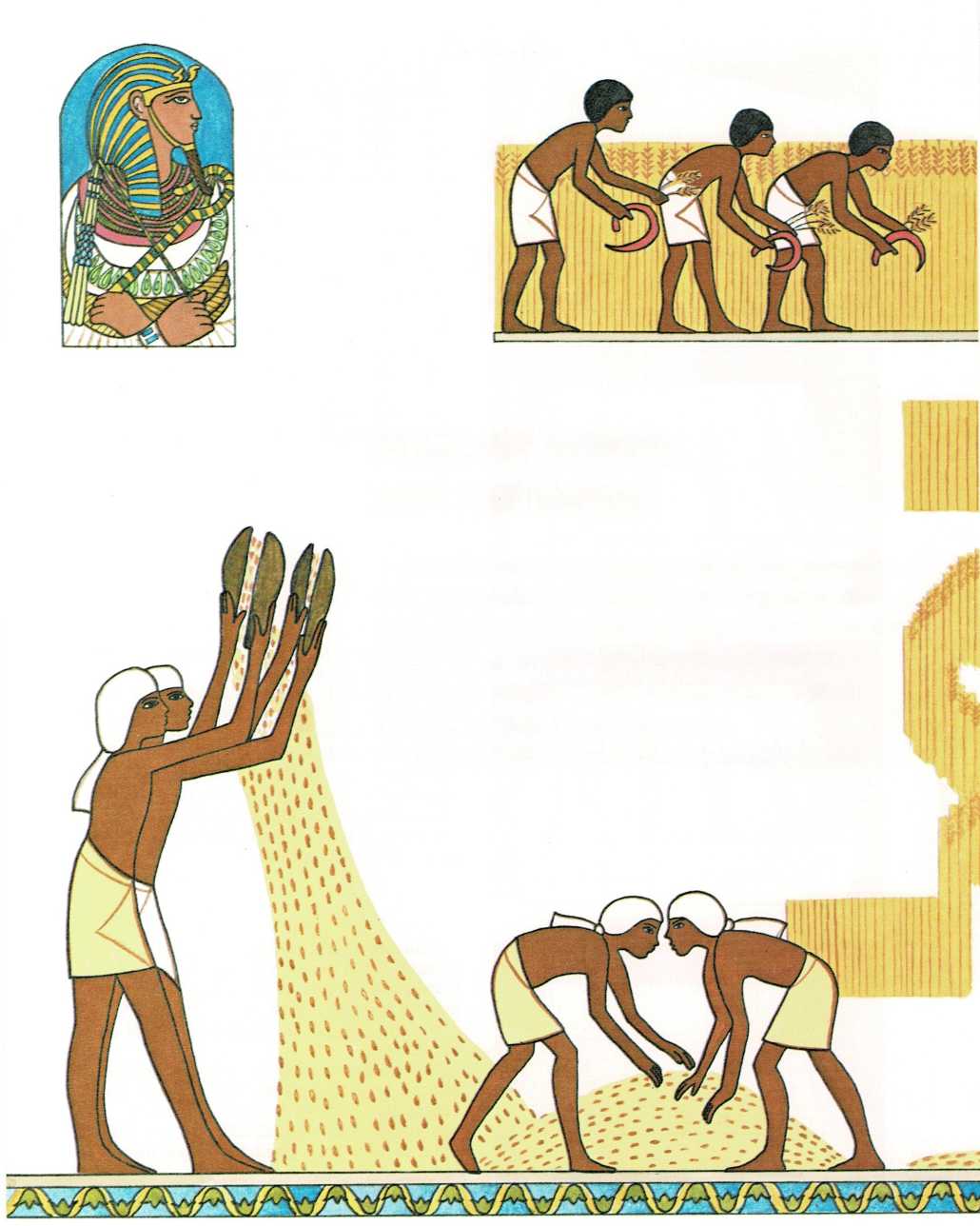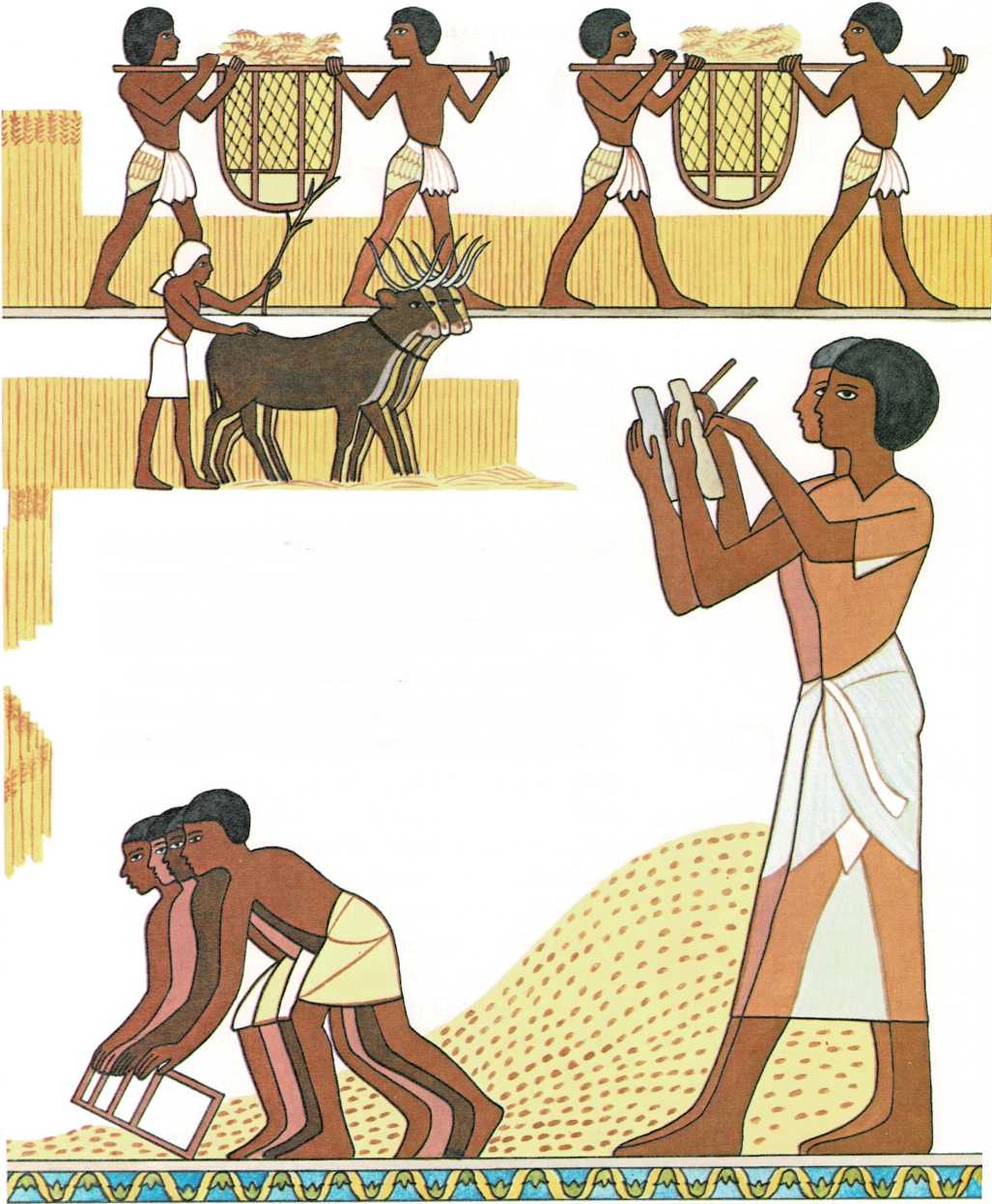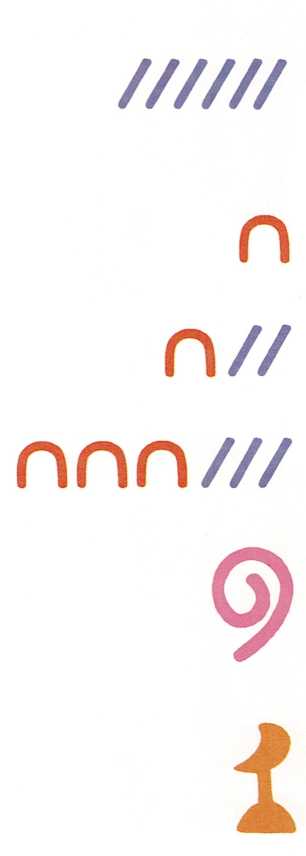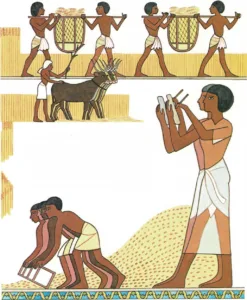
Fingers, flowers, and polliwogs
As tribes became nations and villages became cities, people had more
things to keep track of than ever before. Merchants had to keep
records of the things they traded to other merchants. The king’s tax
collectors had to keep a record of the baskets of grain they got.To do these things, and more, people had to

have a way to write numbers. So, they invented numerals. Numerals are
marks that stand for numbers. These marks make it possible to keep
written records dealing with numbers.Some of the first numerals we know of were invented by the Egyptians
about five thousand years ago. Like people everywhere, Egyptians
counted on their fingers. So, not surprisingly, their written marks for
the first nine numerals look like pictures of fingers. They simply used
as many pictures of fingers as they needed. For example, six was shown
with six fingers.
The Egyptian number system was based on ten. So, for such numbers as
ten, one hundred, one thousand, ten thousand, and one hundred thousand,
they had special signs.
For the number ten, the Egyptians used an arch, a sort of curve. To
write twelve, they used an arch and two fingers. A number such as
thirty-three was written with three arches and three fingers. Perhaps
the Egyptians picked the curve as their numeral for ten because they
thought of it as a kind of enclosure that held the first nine numerals.
The Egyptian numeral for one hundred was a rope with a loop in it. It
looks something like a snare used to catch small animals. Perhaps the
Egyptians picked this symbol because hunters might set as many as a
hundred such traps.
A picture of a lotus flower w^T^as the numeral for one thousand. There
were thousands of lotus flowers in Egypt’s Nile River. So, the Egyptians
probably thought a lotus was a good symbol for a big number like a
thousand.

The Egyptian numeral for ten thousand was a bent finger. Perhaps it
stood for the finger of the Egyptian ruler, the Pharaoh, who could call
ten thousand people together just by beckoning with his finger!
As the numeral for one hundred thousand, the Egyptians used a picture of
a tadpole, or polliwog. Millions of frogs lived along the Nile River.
When their eggs hatched, the water must have been thick with tadpoles.
So it’s easy to see why the Egyptians picked the tadpole as the symbol
for a number as big as one hundred thousand.
The Egyptians did not have a numeral for zero. Nor did their numerals
change in value, as ours do. In our system, 1 all by itself stands for
one. But in front of another numeral (as in the number 13), the 1 stands
for one ten. The Egyptian mark for one stood only for one. It could be
placed anywhere in a row of numerals and it still meant one.
The Egyptians usually wrote their numbers from right to left, but they
also wrote them from left to right, or even up and down. An Egyptian
might have written 1,245 like this:
i\^\^nnnn/////
How would you write 10,582 using ancient Egyptian numerals? All the
numerals you need are shown here. Just unscramble them.


